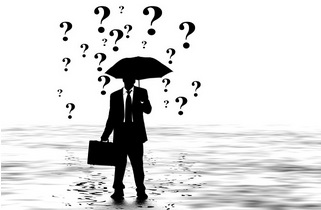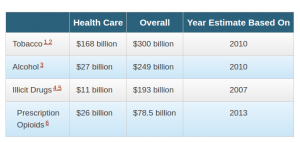ARTICLE SUMMARY: You can get addiction treatment WITHOUT INSURANCE. Here, we outline the possible ways to fund your rehab if you don’t have any insurance. You questions are welcomed at the end.
ESTIMATED READING TIME: 10-15 minutes.
TABLE OF CONTENTS:
- The Cost
- The Average Cost Range
- Factors
- Rehab Without Insurance
- How To Find No Insurance Rehab
- Who Needs Treatment?
- Is Rehab For Me?
- Your Questions
The Cost
The controversy about addiction treatment is that it can cost ‘an arm and a leg’. But, have you ever wonder how much an addiction can cost you? What about the cost to others?
Even though law makers and government officials are most interested in the impact on the economy, it is your family’s economic power which is significantly lowered due to the direct expenses for purchasing alcohol or drugs. So, how much is your drug-of-choice costing you, personally? Here are some sums to consider:
The annual cost of liquor: If you drink a bottle of vodka a day, you are spending around $15. Over the course of 1 year, you spend more than $5,000 on vodka.
The annual cost of an opiate: If you spend $150 daily on heroin, a habit will end up costing you more than $54K in one years’ time.
The annual cost of a stimulant: If you spend about $50 on ½ gram of meth , you’re spending $18,200 to get high.
You should take into consideration health problems and economic difficulties also increase your costs. Are you spending money on costs like:
- Hospital visits
- Job loss
- Unpaid bills
- Unintentional injuries
According to the National Institute on Drug Abuse abuse of tobacco, alcohol, and illicit drugs is costing more than $740 billion annually in costs related to crime, lost work productivity and health care. A small graph follows that outlines these costs and the years the data was gathered.
But rehabs can help!
Evidence-based addiction treatment programs have been proven that are effective in helping people with substance abuse disorders. Patients who enrolled into treatment and finish the program stop using substances, decrease their criminal activity, and improve their living overall. Moreover, NIDA reported that every dollar invested in addiction rehab programs yields a return of between $4 to $7 in reduced drug-related crime rate, criminal justice costs, and theft. If you include health care costs, the total savings can increased by a ration of 12 to 1.
So, is rehab worth its cost?
You decide.
The Average Cost Range
The final cost of any kind of addiction treatment program varies, depending on the services you get. Inpatient programs are most expensive because they provide 24/7 medical supervision, plus you live at the facility. So, the accommodation is expensive. Some average cost of common addiction services include:
Detox: It may cost between $6 to 12K.
Psychotherapy: This service costs from almost free to $150 or more per hour.
Outpatient Treatment: This program ranges between $50-$135 per day.
Inpatient Rehab: A day in this program varies between $235-700.
Find more information on the costs of addiction treatment here.
Factors
Each rehab has different final cost, and they vary in prices drastically. You can find a low-cost program for $7.5K per month, but a high-end program can cost up to $120K. Some of the most influential factor that affect the final price tag for treatment include:
1. The services you receive.
There are plenty of services that a rehab can offer starting from spa, animal therapy, art therapy (or other modalities)… to offering a private room with a personal cook. But, these services are priced accordingly, and you may even need to pay extra if you want them in your treatment plan. So, don’t forget to check out with the staff before assigning to anything.
2. Duration.
Duration of the rehab makes a large part of the final bill. A long-term rehab is far more expensive than a 30-day program. Sometimes, however, a 6 month stay in a residential treatment setting can be the difference between life and death. And we’re not exaggerating. More commonly, a 90 day intensive rehab program can show excellent results.
3. Destination.
Rehabs located in environmental settings with beaches, deep in the forest, within an exclusive resort, or on an island are more expensive than local rehabs. So, just know that “destination”-based rehabs can be more expensive than a community or state funded alternative.
4. Type of program.
Outpatient programs are cheaper than inpatient ones because medical supervision is not include; neither do they offer food or living accommodations to their patients.
Rehab Without Insurance
Paying for drug or alcohol rehab without insurance is possible. In fact, thousands of uninsured people needing addiction treatment find help each year, often using one or more of the following resources.
1. Savings accounts.
If you’re the type of person to save up for a rainy day, it may be time to break into your stash. Depending on how much you have in savings, you may be able to pay for some or even all of your drug or alcohol addiction treatment without insurance.
2. Loans.
Borrowing money to pay for drug or alcohol rehab is completely acceptable, provided that you pay it back. You may be able to borrow money from trusting friends or family members, or get a loan from a financial institution. You can also borrow money from retirement accounts and life insurance policies.
3. Financing payment plans.
Some drug or alcohol addiction treatment facilities allow their clients to finance some or all of their treatment through them. This means that you’ll be required to make manageable payments to the facility over a period of time to cover the cost of treatment.
4. Sliding scale fees.
Many addiction treatment facilities (one sources estimates aroun 65%) offer sliding scale fees to clients that are unable to pay for the entire cost of treatment out-of-pocket. These are reduced fees based on your ability to pay. Income is the most common factor used to determine your sliding scale fees. Other factors include household size and additional household income.
5. Government programs.
Low-income households may also qualify for free medical care, including drug or alcohol treatment, through some government programs, particularly Medicaid. The eligibility requirements for this program vary by state and county, but income and expenses of your entire household are the most important factors. Contact your local county assistance office or your state’s department of health and human services to find out if you might qualify for Medicaid.
6. Non-profit organizations.
Community and national non-profit organizations sometimes offer payment assistance to individuals in need of drug or alcohol treatment without insurance. Some may even offer the actual treatment itself for free to anyone who needs it.
7. Choosing less expensive options.
The cost of alcohol or drug addiction treatment will be determined by a couple important factors, including what type of treatment you choose. Selecting an outpatient addiction treatment center can significantly reduce your cost.
How To Find No Insurance Rehab
Drug or alcohol addiction treatment without insurance is costly. There’s really no way around that. For example, outpatient addiction treatment averages about $135 per day. Inpatient and residential facilities average about $700+ per day, but these centers need to charge more to make up for the cost of housing and feeding several individuals each day. Health insurance covers treatment costs and can help those who have it.
But if you have your heart set on inpatient drug or alcohol addiction treatment, there are a few different places you can turn to for financial help. You can look into centers that allow sliding scale payments, Medicaid and Medicare and other health insurance policies. But, what do you do when you have no health insurance coverage?
Without insurance, drug and alcohol addiction treatment centers may seem hard to find. However, this isn’t usually the case. In fact, many addiction treatment facilities accept clients who don’t have health insurance. The key is to know where to look and who to talk to. Here are some resources who can help:
- Search the SAMHSA treatment locator database. Select your state and then restrict your search by payment option.
- Medical professionals, such as doctors and nurses, will often be able to give you referrals to drug and alcohol addiction treatment facilities that may be able to help you.
- You can also contact a few different addiction treatment facilities in your area and ask if they may be able to help.
- Licensed clinical social workers can connect you with low cost treatment in your area, as well as important community services such as support groups, social services, and low fee counseling.
- Drug and alcohol addiction treatment facilities that offer sliding scale fees and other types of payment assistance can also found using the Substance Abuse and Mentaln Health Services Administration substance abuse treatment facility locator. This can be found online on their website at SAMHSA.gov.
Who Needs Treatment?
Q: Who need treatment for addiction?
A: People who are struggling on their own to stay away fro drug or alcohol.
The National Survey on Drug Abuse and Health reported that there are over 22 million people who experienced substance abuse disorders in 2016. 15.1 million people aged 12 or older deal with alcohol use disorder, while 7.4 million aged 12 or more were diagnosed with drug abuse disorder.
1 in 13 people aged 12 or older needed addiction treatment in 2016.
Additionally, this survey found out that about 21 million people needed addiction rehab. The numbers are divided into age category:
- 1.1 million adolescents aged 12 to 17 need substance use help.
- 5.3 million young adults aged 18 to 25 need substance use help.
- 14.5 million adults aged 26 or older need substance use help.
Moreover, the National Institute on Drug Abuse stated that about 64,000 people died from drug overdose in 2016.
Is Rehab For Me?
Treatment programs are designed to help people with substance use disorder start over with healthy drug-free habits.
If you are not sure about having a substance use problem, stop and ask yourself these questions:
- Do you feel urge/cravings to drink or use drugs?
- Do you have any problems (financial, legal, or family) due to your substance use?
- Do you hide or lie about your substance use?
- Do you need excuses to use/drink?
- Have you failed in quitting?
- Do you continue to use drugs or alcohol no matter the consequences?
If you answered few of these questions with ‘yes’, we suggest that you see an addiction specialist. If you are still not sure, check out these screening tools:
Leave Your Questions Here!
If you have any additional questions about no insurance drug or alcohol addiction treatment, feel free to leave them in the comments section below. We strive to help all of our readers during every step of the addiction treatment process, and we’ll do our best to point you in the right direction.










Related Posts